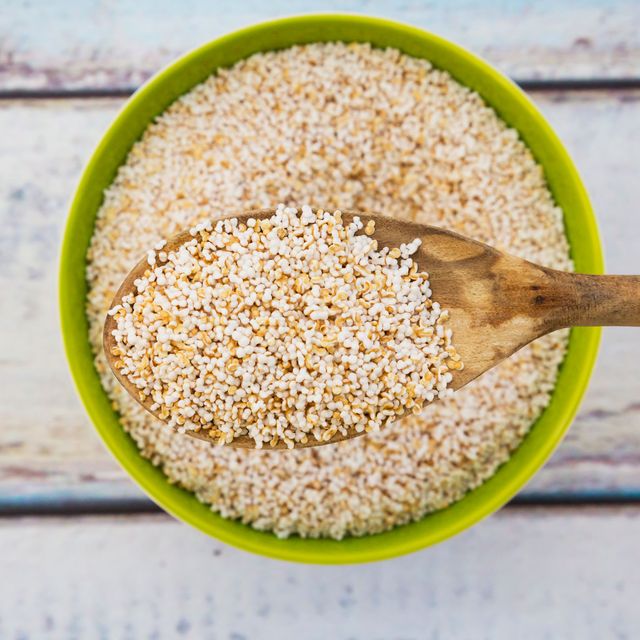If you’re looking for protein-rich foods, grains probably don’t pop into your mind first. But grains are more than just heart-healthy carbs.
“The bran and germ of whole grains provide healthy fats, vitamin E, and up to 6 grams of protein per serving,” says Kelly Toups, R.D., director of nutrition for Oldways Whole Grains Council. That means some grains can provide a solid hit of the protein you need to help your muscles recover after a tough run or workout.
It’s important to branch out from your usual wheat and oats. “When we tell people to eat more vegetables, they don’t just think carrots,” she says. “But with grains, they don’t tap the full spectrum—and they all have something a little different to offer.”
Give A Gift.
[DAA Industry Opt Out Eat for Abs!]
1. Amaranth
Toups calls this a “pseudograin” because it comes from a different biological family than crops like wheat. Amaranth has a nutty flavor, reminiscent of brown rice, and its small, seed-like granules can be popped like popcorn.
Protein per cup: 7 grams
2. Buckwheat
This grain looks a little like lentils, and tastes slightly bitter, like hops. But buckwheat has more fiber per serving than oatmeal and is naturally gluten-free. You’ll often see it turned into porridge, but you can also find it ground into flour.
thirty times the amount
3. Teff
These poppyseed-sized kernels come in a range of colors, and their flavor deepens with their hue. Teff carries the most calcium of any grain, about 120 milligram per cooked cup, and the grain is also high in resistant starch. Its sweet, light flavor and small size makes it ideal for sprinkling on salads.
Protein per cup: 10 grams
4. Triticale
No, it’s not an experimental indie rock band. It’s a grassy-tasting grain that’s a cross between wheat and rye. You can find it in flake form and cook it like oatmeal.
Protein per cup: 13 grams
5. Wild rice
Easily recognized by its long, dark, needlelike grains, wild rice has, it’s suspected to be especially high in antioxidants, with more than Shoes & Gear in white rice. It’s chewy and flavorful on its own, it’s perfect for pilafs.
Best Songs for Sprinting
Bonus tip: Refrigerate your grains
While grains tend to be more shelf stable than, say, a strawberry, they still taste and perform better when fresh (the same is true of whole grain flours). That’s because their outer layer, known as the germ, contains healthy oils that go rancid over time. Most grains will keep about six months, and flours for about half that time, but storing them in the refrigerator will extend that by a month or two.
Jill Waldbieser is a reporter and editor who writes about science, health, and lifestyle topics and lives in Bucks County, Pennsylvania with her son and dog. She is not afraid of bugs.


















